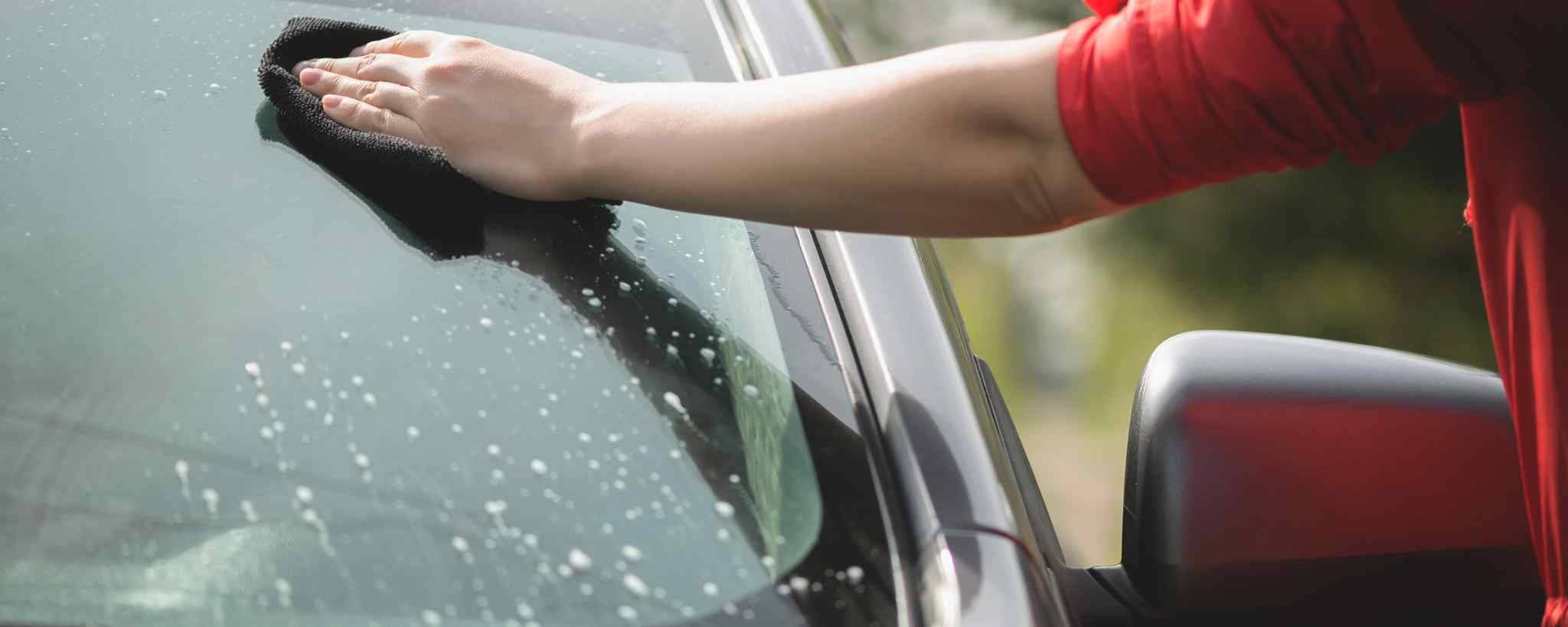Most Effective Way of Removing Swirl Marks From Car Paint
Looking for the best way to get rid of swirls from car paint? Here's are some effective ways to remove swirl marks at home!

Use AI to summarize this article:
This guide explains the best way to remove swirl marks from a car using techniques shared by experienced detailers.
How to Remove Swirl Marks on Car
Swirl marks often become visible under direct sunlight or with the help of an LED inspection light. It's easier to identify swirl marks on black or dark-colored cars which appear like a cobweb across flat surfaces. I personally recommend checking areas like the hood, roof, and trunk first, as these surfaces are more common areas for swirls to appear.
Tools Needed To Get Swirls Out of Paint
To properly remove swirl marks from a car, you’ll need a few specific tools:
- A high-quality car wash soap
- Two buckets (wash and rinse)
- Grit guards
- Clay bar and lubricant
- Microfiber towels (preferably from trusted brands like The Rag Company)
- Swirl remover or compound (e.g., Meguiar's Ultimate Compound)
- Polish (e.g., Meguiar's M205)
- Wax or paint sealant
- Optional: Dual action polisher with foam pads
Many detailers recommend starting with Meguiar's products due to their accessibility and balanced cutting power. A user(detailer) on Reddit also suggested combining Ultimate Compound with ScratchX for a hand-application approach, followed by a protective wax.
Step-by-Step: How to Remove Swirl Marks by Hand
Step 1: Wash Thoroughly Using the Two-Bucket Method
- Pre-rinse your car to remove loose dirt.
- Use a grit guard in each bucket to minimize contamination.
- Apply pH-balanced car shampoo using a clean wash mitt and rinse it frequently in the rinse bucket.
Step 2: Decontaminate the Surface Using Clay Bar
After washing, glide your hand across the paint. If you feel rough patches, bonded contaminants are still in the surface. Use a clay bar and an appropriate lubricant to remove them.
Work in small sections, using light pressure and straight-line motions.
Step 3: Apply Compound or Swirl Remover
Using a foam applicator pad, apply a small amount of compound to a 2x2 section. Work it in using crosshatch and circular motions. Wipe off the residue with a clean microfiber cloth.
Put even pressure to avoid introducing new marks.
Step 4: Polish the Paint
Follow up with a high-quality polish to refine the finish.
Apply the polish with a clean pad and buff gently using a buffing pad until the paint gains a consistent, glossy look.
Step 5: Protect with Wax or Sealant
Apply a paint sealant or wax to preserve your work and reduce future swirl formation.
Many professional detailers prefer using a silica-based product for its hydrophobic properties and durability.
Optional: Using a Dual Action Polisher
Dual-action polisher is recommended if you want a faster and more consistent result.
Some of the most recommended beginner-friendly DA polishers to get rid of swirl marks are Griot’s Garage DA and Porter-Cable 7424XP.
Match your pad and polish appropriately and then start with a polishing pad and medium-cut compound, then finish with a softer pad and polish.
What Causes Swirl Marks
According to experienced detailers across online detailing forums like Auto Geek, swirl marks are often caused by poor washing habits.
Using a single dirty bucket, applying too much pressure with a dry towel, or wiping down the car without lubrication can grind abrasive particles into the clear coat leading to swirl marks.

Types of Swirl Marks
Buffer Swirls (Holograms)
- Circular or hologram-like patterns on the paint surface after improper machine polishing.
- Often caused by rotary buffers when used with too much pressure, a hard pad, or the wrong product.
- Visible under direct light, may look like 3D holograms on the car’s surface
Dual Action Haze (Micro marring)
- A hazy finish left after using a Dual Action (DA) polisher
- Occurs when the polishing product hasn’t fully broken down or when the wrong pad is used.
- Instead of leaving swirl marks, DA haze leaves a cloudy or hazy appearance over the paint, especially noticeable on dark-colored vehicles.
Wash Marrings
- Refers to the fine scratches and imperfections caused by improper washing or drying techniques.
- Caused by using a dirty wash mitt, not pre-rinsing the car, or wiping with an abrasive cloth.
- Small, random scratches or light swirls dull the paint’s appearance.
Where Are Swirl Marks Most Likely to Appear on a Car?
Swirl marks don't discriminate and can appear anywhere on your car. However, some areas are more prone than others.
Hotspots for Swirl Marks on Different Car Panels
The hood, roof, and trunk are common spots for swirl marks because people tend to focus their washing and drying efforts on these areas. You might also see them around the door handles or mirrors, where there’s frequent contact with the car's surface.
How to Avoid Swirl Marks After Correction
Here are some expert tips to prevent swirl marks on your car:
Use Proper Washing Techniques
Never use just one wash bucket or dirty towels. Stick to the two-bucket method, rinse thoroughly, and always use lubrication when wiping the car.
Microfiber towels should be cleaned after every use.
Avoid Automated Car Washes and Abrasive Tools
Skip automated car washes as their brushes retain grit from previous vehicles and can reintroduce swirl marks on your car's paint. Avoid dusting your car while it’s dry, as particles can scratch the clear coat.
Reapply Protection Regularly
A well-maintained coat of wax or sealant acts as a sacrificial layer, taking the brunt of any incidental contact. Reapply every few months or more often if your car is exposed to harsh weather.
Is It Normal for a Car to Have Swirl Marks?
Yes, swirl marks are one of the most common paint defects faced by car owners.
Even when a car is washed regularly, improper techniques like using dirty wash mitts, wiping without lubrication, using harsh cleaning products, or drying with rough towels can introduce micro-abrasions into the clear coat.
How Much Does It Cost to Remove Swirl Marks from a Car?
Swirl mark removal can range from $100 to $500 or more, depending on the severity of the defects, the size of the vehicle, and whether the work is done by hand or with a machine polisher. Most car detailing services offer swirl removal services. While entry-level swirl correction packages include a wash, clay bar treatment, and a single-stage polish, more comprehensive services may involve multi-step correction, paint sealants, and even ceramic coatings for longer-lasting protection.
DIY swirl removal is more affordable, with the total cost of materials like compound, polish, microfiber towels, clay bar, and optional machine polisher costing between $60 to $200.
While DIY swirl-free finishes for your car can be cost-effective, they require more time and attention to detail, especially when working by hand.
FAQs About Swirl Mark Removal
Can You Remove Swirl Marks Without a Machine?
Yes, but it requires patience and proper technique. Hand application works best on light to moderate swirl marks.
What’s the Best Product for Removing Swirls on Black Cars?
Meguiar’s Ultimate Compound followed by M205 polish is a go-to combo for dark paint correction.
Are Swirl Marks Permanent?
No, most swirl marks are correctable as they exist within the clear coat. However, repeated improper washing techniques can deepen existing swirl marks over time.
How Often Should I Polish My Car's Paint?
Only when necessary. Frequent polishing can thin your clear coat, so focus more on protection and prevention.

Parham Koukia
Lead Car Detailer / Operations Manager
With nearly 15 years of hands-on detailing experience, Parham has become a trusted authority in the auto care world. His work is regularly spotlighted in leading outlets like CNN, GoBankingRates, and Family Handyman. Parham likes to share his knowledge to offer in-depth tips on equipment selections, seasonal car care, and some secret car cleaning tips used by detailers in the real world!
Read more